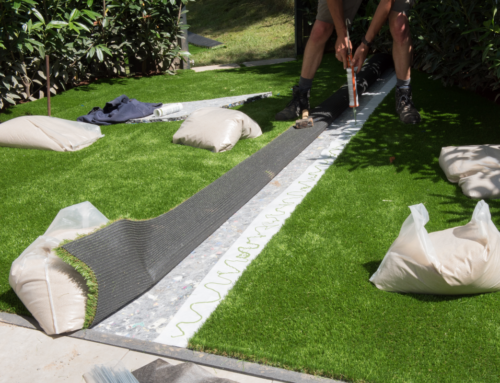Last Updated on October 24, 2022 by ReTurf
Pitching mats for baseball and softball are the perfect training tools to help improve your stride, foot placement, and overall pitching stance.
They can help you train with consistency by giving you a realistic surface to practice on; helping you to perfect your pitching mechanics—and become a force to be reckoned with on the field.
How Big Is a Pitching Mat?
Pitching mats come in a variety of sizes, but they are typically between 3 to 6 feet wide.
Length can vary depending on the size of the mat, but they are typically around 10 to 12 feet long.
What Are Pitching Mats Made Of?
Pitching mats are commonly made out of artificial turf with a bottom layer of rubber padding. This combination provides a realistic feel that’s very close to pitching on an actual field—but without the risk of damaging your lawn or flooring
Unlike what people commonly think of when they picture “astro turf,” modern, professional-grade artificial turf has a textured surface that closely simulates real grass.
Artificial turf for sports (as opposed to landscaping turf) is extremely durable and can withstand regular use, which is why you commonly see it used in batting cages.
How Does a Pitching Mat Help with Training?
Pitching mats are an essential training tool for any pitcher who wants to improve their game. They can help you develop proper pitching mechanics and muscle memory, so you can pitch with greater velocity, accuracy, and control.
They can help you hone your pitching form and mechanics in a few different ways:
- They force you to keep your footing consistent. By training your muscles to always place your feet in the same spot, you can develop good habits that will carry over to when you’re pitching on an actual field. Some mats may come with raised edges or spikes to help keep your feet in the right location, but you can easily add this type of feature yourself.
- They provide a realistic surface. Pitching mats are often made with artificial turf, which gives them a very similar feel to actual grass. Pitching mats with foam or rubber padding also have a bit of “give,” which is important for shock absorption. This can help reduce the risk of injury when you’re practicing your pitch, and can help you get a better feel for your footing.
- They train you to stay within the required area. Some pitching mats will have white lines or other markers that designate where your feet should be placed. This can help you train your body to automatically stay within the pitching area, which is important when pitching in a real game.
Besides the ways they can improve your game, synthetic grass pitching mats have some other benefits:
- They’re durable. Artificial grass pitching mats are built to withstand the wear and tear of regular use; meaning they’ll last you season after season.
- They save your lawn/flooring. Pitching mats can be used both indoors and outdoors; meaning you won’t have to worry about damaging your lawn or your flooring.
- They’re easy to set up and take down. Artificial grass mats can be rolled up and stored away easily, so you don’t have to worry about them taking up a lot of space in your home or garage.
- They’re affordable. Synthetic turf can be surprisingly affordable—especially if you use recycled, used artificial turf. Repurposed turf may come from stadiums, football/soccer fields, or other sports facilities that replace their field on a regular basis. And since sports field turf is made for abuse, it’s typically far more durable than normal landscaping turf. This means you can find premium quality used artificial turf at a fraction of the cost of buying new.
If you’re serious about taking your pitching game to the next level, an artificial turf pitching mat is a must-have training tool. If you want to save some money, you can make your own DIY pitching mat very easily using recycled artificial turf.



